The best varieties of onions for greens - description and cultivation in the open field and in a greenhouse
Green onion feather always attracts not only with its bright, attractive appearance with its juiciness, but also with the benefits that its constant use brings. Especially in early spring, it will support and save the human body from colds with vitamin C. What variety to choose for cultivation in a greenhouse and open field?
Content:
- Choosing a variety for planting onions on greens
- Growing onions for greens in the open field
- Growing onions on a feather in a greenhouse
- Top dressing and care rules
Choosing a variety for planting onions on greens
Choosing a variety Luke on greens, you need to know that if there is only one formed bud in the cut onion, then there will be little feather from it. Therefore, there are special varieties of onions that are used specifically for cultivation thick and juicy greenery.
These include the following:
- The slime is recognized by the wide leaves of a delicate structure, which has a weak odor. garlic... Refers to frost-resistant, early ripening varieties. Slime grows well in greenhouses, where you can harvest high yields all year round.
- Shallot characterized by high quality feathers and dense abundant greenery. The yield of this variety is one of the highest. It is not for nothing that it is called the shrike, since one shallot nest can give up to 30 small onions. This species does not like abundant glaze.
- Pearl leek attracts with wide leaves, like garlic with a delicate taste and smell.
- Shnitt has narrow delicate leaves that never coarse, have a delicate aroma. Likes to grow in the sun, loves moist loamy soils.
- The widespread batun is perennial, giving greenery 3 times per season, but there is also an annual species with a one-time harvest. Grows constantly in one place for 5 years, loves fertile soil, not sour. Its peculiarity is that even a densely sown plant is famous for its high yield.
- Egyptian, or Canadian onions are quite unpretentious and surpass the baton in quality of feathers. The resistance of the variety to frost is very high, it is not afraid even of severe cold weather.
All varieties have their pros and cons, they are usually chosen depending on the climate, taste and place of cultivation.
Growing onions for greens in the open field
The varieties described above Luke used as planting material either in late autumn before severe frosts, or in early spring after thawed patches appear. Only onions are selected for growing greens, which have numerous rudiments and a size of three to four centimeters in diameter.
Before planting, the selected bulbs are soaked for 24 hours, dipped in warm water. Then the tops are cut in order to speed up the appearance of the green feather and increase the yield.
There are several planting methods:
- The bulbs, laid close to each other, look like a small bridge, on top of which fertile soil is poured in a layer of 3 centimeters. This method requires more than 10 kilograms of seed per square meter.
- The prepared onions are distributed into grooves at a distance of up to four centimeters and simply level the bed with a rake. Between the grooves - from twenty centimeters.
If we plant it in the fall, before winter, then pour humus or manure on top, and in the spring we remove it and tighten the protective film over the plantings. Onions can be harvested after planting seed plants. They are usually sown in the middle of summer in a well-fed and loosened soil, not forgetting to hold the nigella in a solution of potassium permanganate before that.
After the first shoots appear, the plants are thinned out, leaving a distance of up to 5 centimeters between them.
By winter, when the onion feather is almost 25 centimeters high, the beds are sprinkled with peat or covered with straw. After the spring melting snow, you can harvest green vitamins from the garden. For the use of green onions in the summer, planting is carried out in early spring. seeds... Special care of the planting is not required, except for abundant glazeif summer is hot, and timely feeding.
Growing onions on a feather in a greenhouse
For harvesting green onions during winter and early spring, it is best to grow them in a closed way. In the greenhouse it is more convenient to do this from mid-autumn to spring, and in a greenhouse method - from mid-winter to the end of May.
It is best to plant onions on greens in boxes containing nutrient soil, consisting of equal parts of garden soil, flavored with peat, humus or composted soil.
Having previously soaked the bulbs in warm water, they are planted tightly with a bridge in a container, covered with a thin layer of soil on top. Plant boxes stacked on top of each other while the vegetable grows, for a period of half a month, free up space in the greenhouses for other plants. After 15 days, it is necessary to place containers around the entire perimeter of the area in a greenhouse or greenhouse, observing the growth of the vegetable and maintaining the air temperature in a closed room at least 18 degrees Celsius.
Water the onion during the growing period about 4 to 5 times, adding between waterings mineral fertilizers... Greens are removed when the feather reaches a height of more than 30-40 centimeters.
Depending on the variety chosen, the yield of green onions will be high if the rules are followed agrotechnics... When growing a vegetable in a greenhouse, you must constantly monitor the temperature in the room. And a month after planting, you can feast on the fresh greens of the plant.
Top dressing and care rules
Top dressing of onions:
- Onion for greens is a must feed, especially during the growing season. Wood ash scattered on the garden bed will be effective.
- To prevent the plant from catching a fungal disease, it is better to feed it with potassium salt in time.
- Some onion varieties respond well (chives) for the introduction of lime and humus.
- Fertilizing is most often carried out in the evening, when the coolness comes.
- It is necessary to try to prevent mineral fertilizers from falling on the leaf of the vegetable, as this can harm it.
From pests the plant infects the weevil, a small bug with a hidden proboscis bent under itself. Harm is caused both by the beetle itself and by its yellow larvae, which the female lays in the soil. Gnawing the pulp of a leaf of a plant, he makes moves that are visible to the naked eye. The feather of the onion begins to turn yellow from the top and dry out. To save the onion from the pest, it is necessary to thoroughly cleanse the garden from debris, and in the spring spray sowing the plant with tobacco infusion with the addition of laundry soap.
Storage greens are carried out in a cool place, in the refrigerator in sealed polyethylene bags.
Such storage will help the feather stay green and juicy for two months. Without packaging, the onions will quickly turn yellow and wilt.
More information can be found in the video.




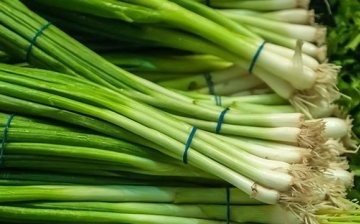
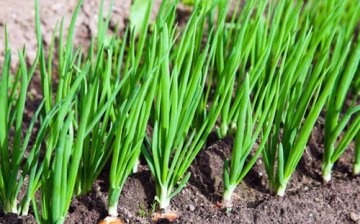
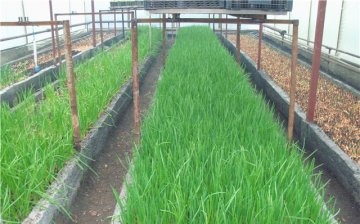
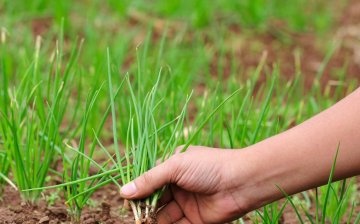





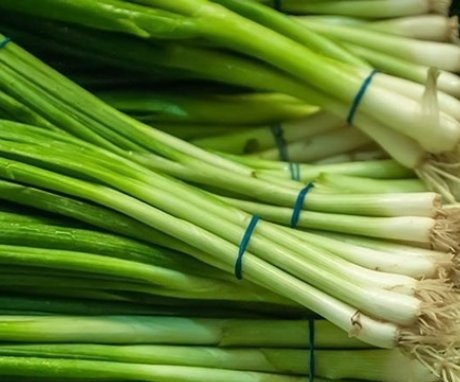
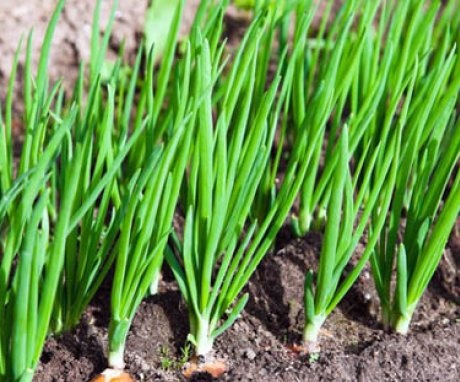
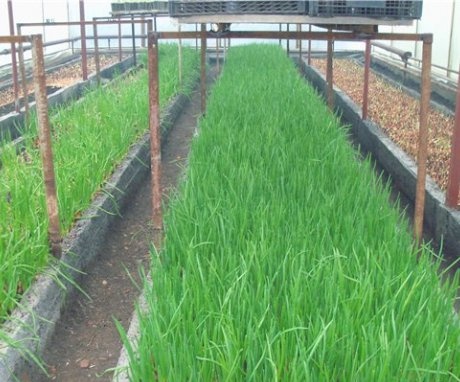
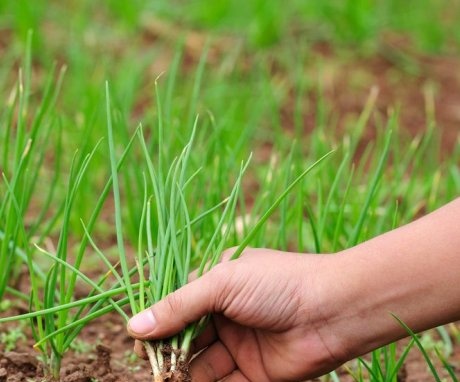
In the summer we always pluck a feather of green onions in the garden. Usually we plant shallots, this variety has very tasty and rather thick greens. We do not cut off all of it, but gradually tear one, two feathers from each onion.